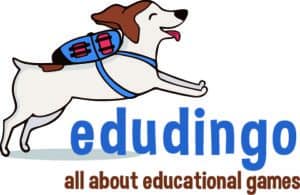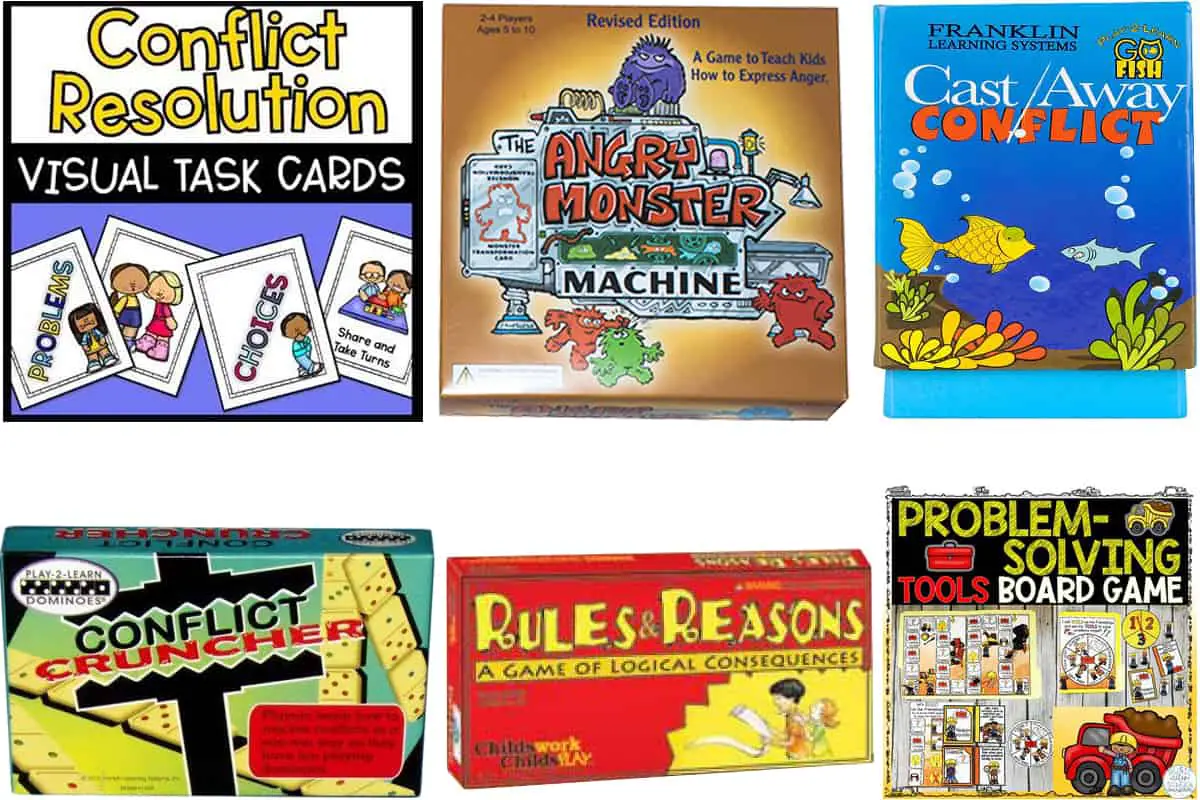This post contains affiliate links.
Card and board games are interesting approaches to teach children conflict resolution skills, as the released atmosphere of games enables to address this issue of conflict in a relaxed way. They intrinsically also help children learn to respect common rules.
So what are the conflict resolution games available for children up to 5-year-old? I have selected six games that use cards, educational boards, and dominos that help teach the preschool child different conflict resolution strategies. These games can be used by any educator, be it a parent, a teacher, or a counselor.
Conflict Resolution Games Comparison Table
| Game | Age | Players | Type | Price | Rating |
|---|---|---|---|---|---|
| Cast Away Conflict | 5‑11 | 2‑5 | Card | $$ | ★★★☆☆ |
| The Angry Monster Machine | 5‑10 | 2‑4 | Board | $$$$ | ★★★★☆ |
| Rules and Reason | 5-10 | 2-4 | Board | $$$$ | ★★★☆☆ |
| Consequences | 3-10 | 2-4 | Board | $$$ | ★★★☆☆ |
| Conflict Resolution Visual Task and Game Cards | 3-7 | 2-6 | Printable | $ | ★★★★☆ |
| Problem-Solving & Conflict Resolution, Board Game | 3-9 | 1-4 | Printable | $ | ★★★☆☆ |
| Responsibility, Goal Setting, & Conflict Resolution | 5-7 | 1 | Printable | $$ | ★★★★☆ |
Where:
Type of game: Boardgame, Card game, Printable game
Conflict Resolution Regular Games (Card & Board Games)
Cast Away Conflict (Franklin Learning Systems)
★★★☆☆
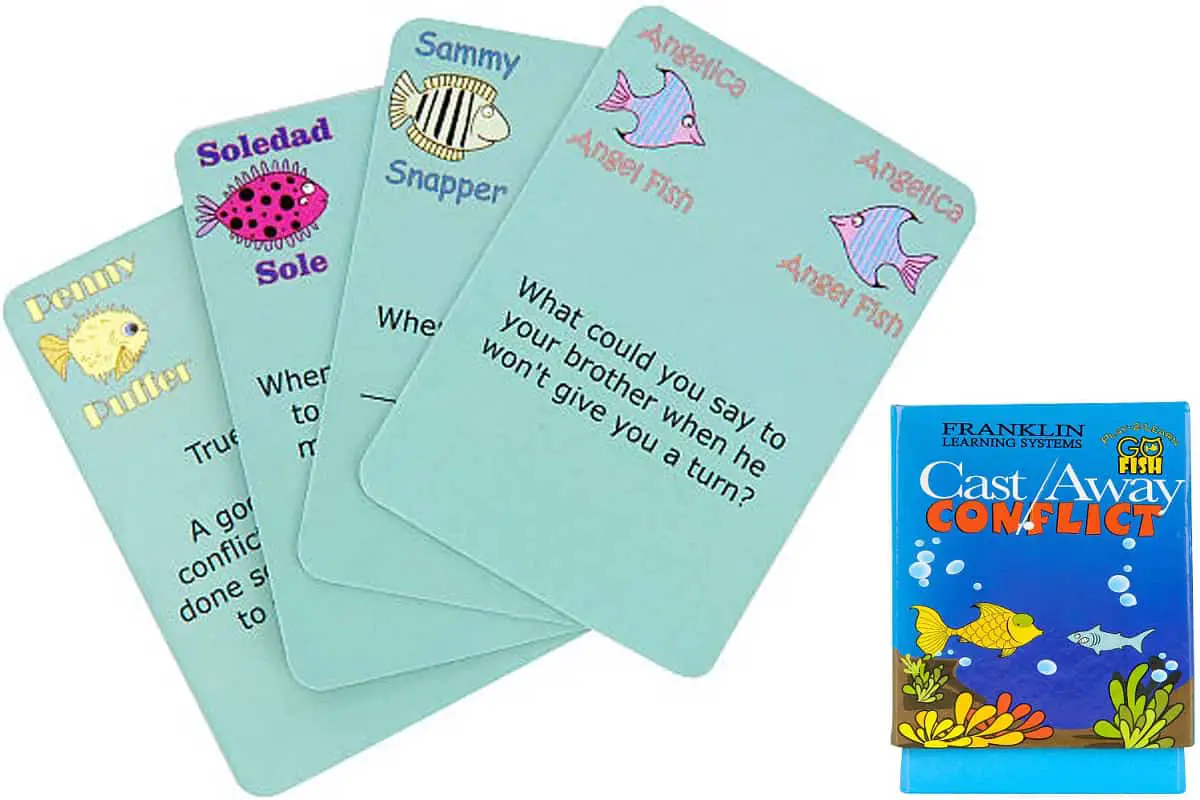
Age 5-11 | 2-5 players
I recommend Cast Away Conflict which is similar to “Go Fish”, except that children must answer a question before receiving the card they want. It helps children learn to manage conflict in an assertive but nonviolent way.
The core skills the children will learn are:
- apologizing
- compromising
- listening to what others have to say
There are two decks of 50 cards; one for children 5 to 8 years old and the other for ages 8 to 11.
Players read scenario cards that contain conflict situations and are asked to solve the conflict in a way that is fair to both sides. For example, in one such scenario, the child needs to answer the following question: “What could you say to your brother when he won’t give you a turn?”
These cards are great for training children to stop and think about the conflict and not act on an impulse. In all the scenarios, the children are asked to explain why they answered the way they did, which also helps them to communicate and internalize their feelings. The game also suggests for which conflict scenarios it is best to bring in an adult as a mediator.
Pre-schoolers love this game with its fun illustrations and silly names for fishes (Angelfish is called Angelica, Sole is Soledad, Gold Fish is Goldie!).
The Angry Monster Machine (Childswork Childsplay)
★★★★☆
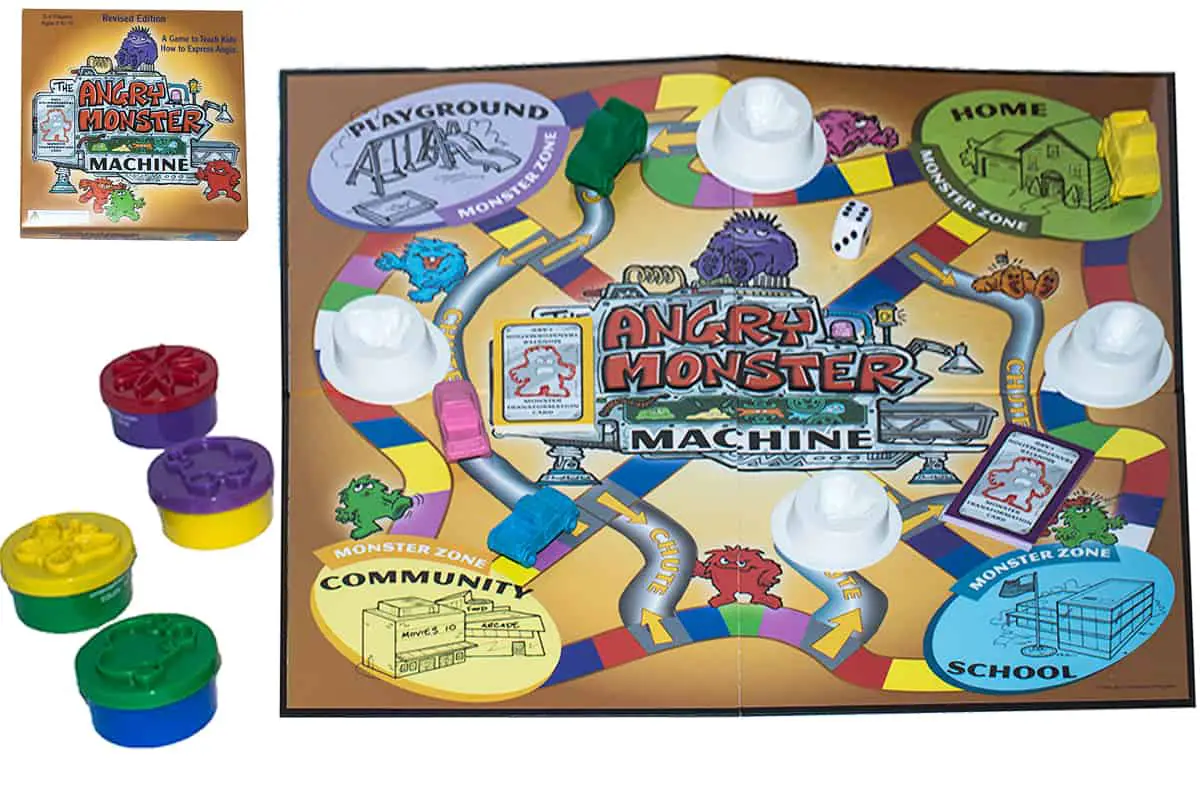
Age 5-10 | 2-4 players
This board game consists of:
- A Die
- 12 Reader Transformer Cards &
- 12 Non-Reader Transformer Cards (with illustrations on them)
- 4 Trucks, 4 Jars of Play Doh, Angry Monster Maker Mold
The Angry Monster Machine helps kids transform their anger into a positive experience.
helps kids transform their anger into a positive experience.
Children first make four monsters from play-doh and choose where to start from: school, community, playground or home. The chase in plastic cars starts; each child rolls the dice and tries to be the first one who catches the monster and carts him back to the monster machine at the center of the board. When the child gets there, she/he says something that will make the monster angry and then chooses one of the twelve transformer cards to transform that anger into something positive. The child also must transform the monster into another shape.
Although the game is recommended for ages 5 and older, 4-year-olds can also play this game. They are able to sit still and listen as long as they can use their hands to roll out play-doh and move monsters and carts around the board. The only downside is that there are only 12 cards for non-readers, but you can make your own cards to give children more options.
Rules & Reason: A Game of Logical Consequences (Childswork Childsplay)
★★★☆☆
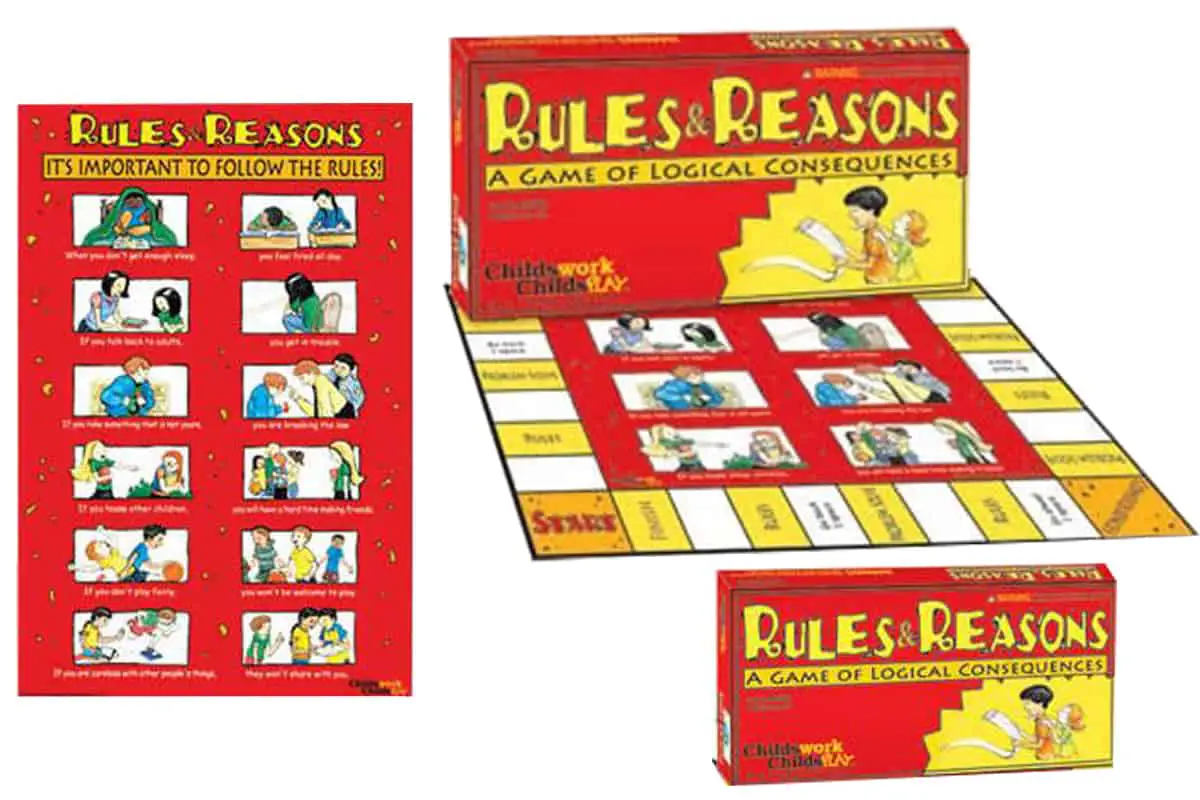
Age 5-10 | 2-4 players
Rules & Reason is designed to help 5-year-old+ children understand why rules are important and that there are consequences for breaking them.
At age 5, children are just starting to use reasoning and logic and are more able to understand that for each action there is a logical consequence. For example, if the child teases other children, she or he will have a hard time making friends.
The game also helps the children understand that they can get what they want without breaking rules.
Rules and Reason consists of three sets of card, each reinforcing a particular skill:
consists of three sets of card, each reinforcing a particular skill:
- 24 Problem Solve Cards help children see that there are alternatives to misbehaving
- 24 Rules Cards help children think about appropriate consequences for common behavior problems
- 24 Consequences Cards let children know that misbehaving has its consequences and, more importantly, that they have the power to make things right.
Consequences – The ultimate behavior game
★★★☆☆
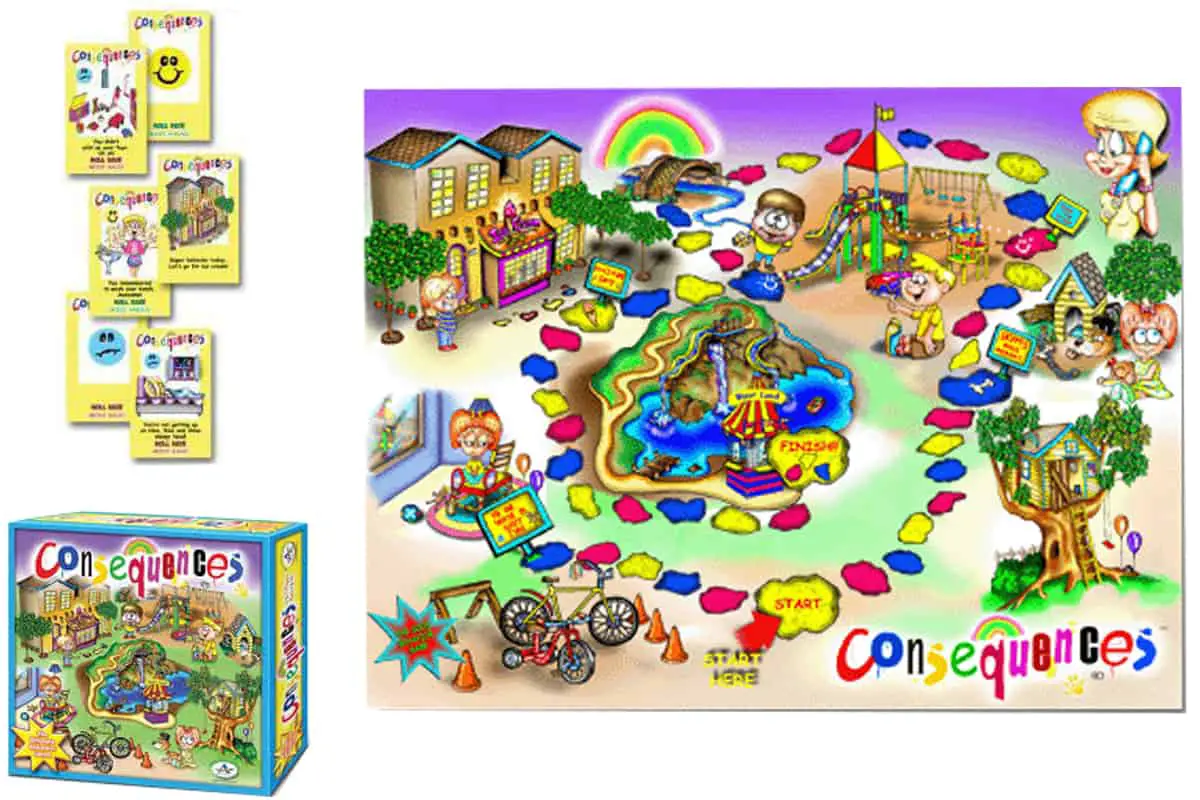
Age 3-10 | 2-4 players
3-5 years old are self-centered and for them, there is usually only one solution to a problem, their solution. They have a hard time respecting the boundaries and needs of others.
The Consequences board game is designed to help 3-year-olds and up understand that there are consequences to their behavior. It features cards that help reinforce tasks that the child at this age practices a lot, like brushing their teeth, going to bed on time, sharing with others.
is designed to help 3-year-olds and up understand that there are consequences to their behavior. It features cards that help reinforce tasks that the child at this age practices a lot, like brushing their teeth, going to bed on time, sharing with others.
The rules of the game are simple for three-year-olds to understand; the dice is color-coded and cards have pictures on them. In addition, the board features a path made of colorful stones, the park, the ice cream, and Waterland. However, there is also the quiet time room.
There could be more negative behavior cards to choose from, but the game comes with 6 blank cards so you can make your own cards.
Conflict Resolution Printable Games
I find printable games a great resource for teaching as they are inexpensive and the game can be improved by adding new teaching ideas or taking out ones that do not work out.
Conflict Resolution Visual Task & Games Cards (The Responsive Counselor)
★★★★☆
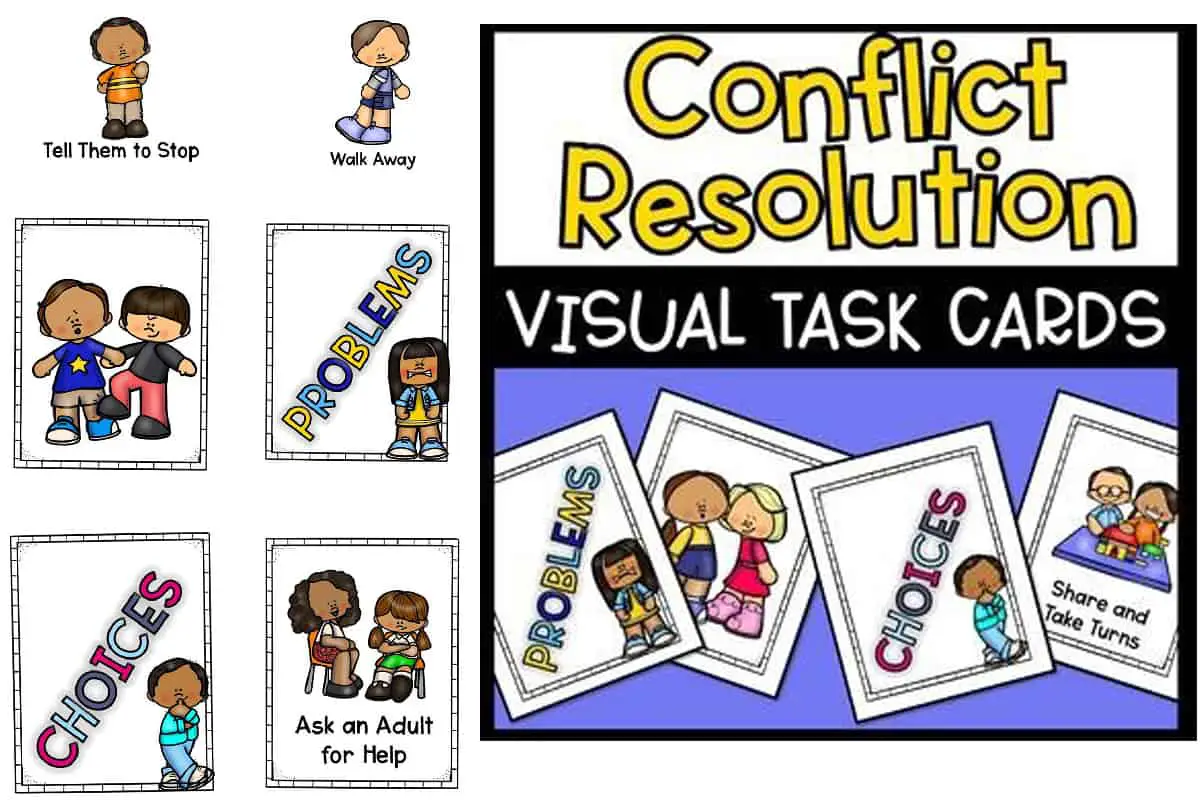
Age 3-7 | 2-6 players | For teachers (but can be used at home as well)
The Conflict Resolution Game for Lower Elementary can be used for small groups or the whole class.
It is great for 3-5 years old who like to move a lot. There are scenarios where the child needs to describe a problem to others by acting it out. I also recommend it for children who are about to start reading since the cards feature word phrases that are short and easy to spell out.
There are 6 bonus cards for bringing competition into the game and they are suitable for 5-year-olds and up. The game consists of:
- 12 choices cards, including the 9 Kelso’s Choices for schools using that language. The choices to a problem that the children can choose from are:
- Tell Them to Stop
- Make a Deal
- Share and Take turns
- Talk it Out
- Go to Another Place
- Wait and Cool Off
- Ignore
- Walk Away
- Apologize
- Ask an adult for help
- Think about your choice
- Say how you feel
- 12 problem cards for solving the most common conflict situations such as a child scribbling on another child’s paper or grabbing food from another child, a child is excluded from the game.
- 6 “Bonus” cards for using with a competitive points-based game
- Optional card backs
- Mini chart with 9 main choices
Problem-Solving, Conflict Resolution, & Social Skills Board Game (Music City School Counselor)
★★★☆☆

Age 3-9 | 1-5 players (Centres, individual and small group counseling, homeschooling)
This is a very interactive game suitable for both young and older children, but it will appeal more to 3 to 5-year-old children who love tools and construction workers. It has 5 construction workers as players and six “tools” to fix their problems.
The set includes (in color & B&W):
- Detailed instructions for the educator on how to assemble and teach the game and simplified visual instructions for children
- A spinning wheel with 6 “tools” for children to solve small problems themselves:
- use your words
- calm down
- share and take turns
- ignore it
- please stop
- walk away
- A Board
- 20 “problem-solvers” scenario cards. The scenarios address the most common conflict issues among young children. For example, one of the cards says “Allie, Jake, Jai’Quan, and Liz said that you couldn’t join their club.”
- 20 “chance” cards that allow students to practice skills such as calm down techniques, positive affirmations, breathing strategies
- 5 construction worker “players”
This game can be easily stored in a folder and be improved by adding new teaching materials or taking out ones that do not work.
can be easily stored in a folder and be improved by adding new teaching materials or taking out ones that do not work.
Responsibility, Goal Setting, & Conflict Resolution (Proud to be primary)
★★★★☆
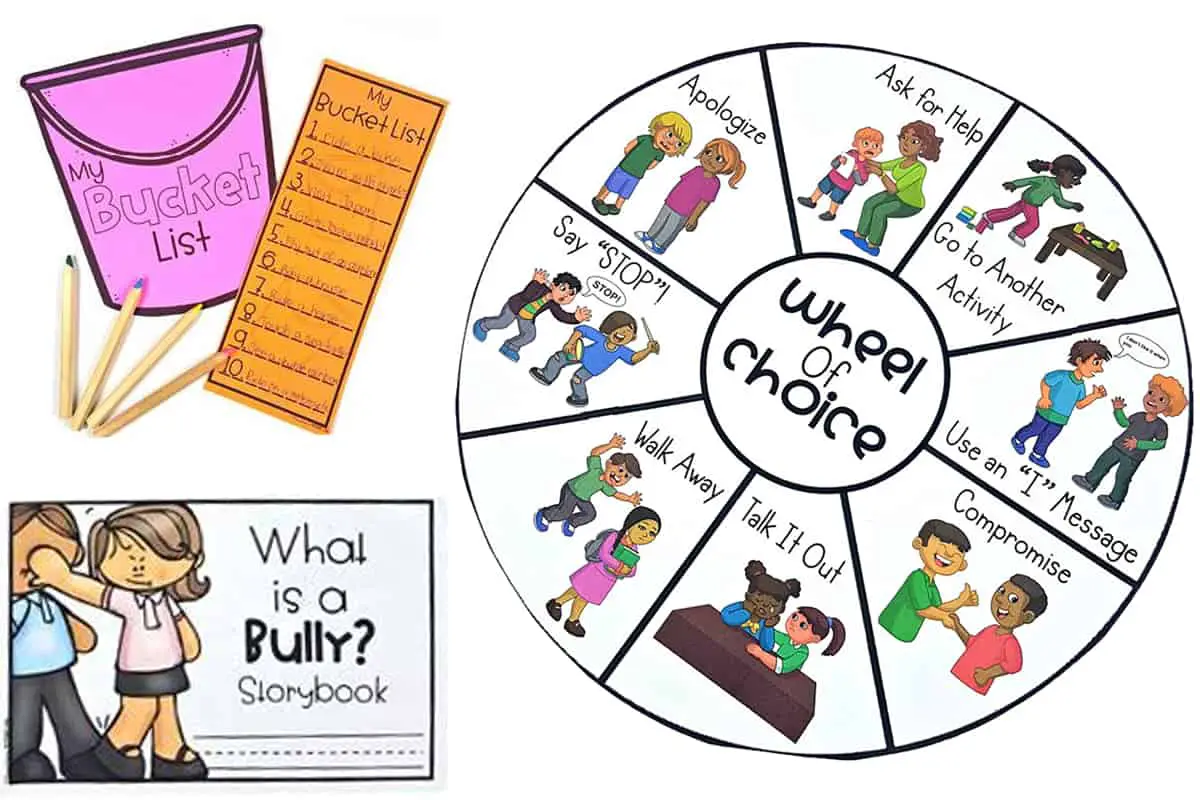
Age 5-7 | 1 player
The game teaches the child the importance of taking on responsibility and not blaming others for their actions and mistakes. It is divided into six lessons:
- What responsibility means, for example, there are cards for children to sort out into two piles: responsible and irresponsible actions. The cards may read “picking up trash on the playground” or “making and leaving a big mess on the table”.
- The ways to demonstrate responsibility, the children play the responsibility cards game, for example, the child draws a card that says “clean your desk” and then goes and cleans his desk.
- What the goal is and why it is important to set a goal and stick to it, there is “my bucket list” where the child writes down their wishes. For example, the child may write that they would like to learn how to ride a bike or go to Disneyland.
- How to solve the problem peacefully, for example, the child can choose to be a peacemaker or a peace breaker, that is, they can either ask for help or yell and scream, apologize or tell lies.
- What is bullying and how to tell someone is a bully. Sorting cards “buddy versus bully” describe bully & buddy characteristics.
- How to stop a bully and stand up for others when they are being bullied, e.g. there is an anti-bully pledge for children to write down.
Each lesson comes with a variety of printables such as worksheets, workbooks, playing cards, posters, spinning wheel…
Although this set is better suited for primary children, some lessons can be turned into a fun game for preschoolers, lesson four in particular. For example, in the card game “What’s a Solution?” children learn what to do if someone trips him on the playground or a kid laughs and points at him. These cards can be combined with the wheel of choice that comes with this lesson and offers 8 ways to resolve a conflicting situation.
Conflict Resolution Games for Older Children
If you are interested in conflict resolution games for primary, middle or high school children, you will find plenty of great ideas in the following two posts on the Edudingo blog:
- Conflict Resolution Card and Dice Games for Families and Schools.
- 7 Conflict Resolution Board Games For 7 to 17 Year-Olds
Other Approaches for Conflict Resolution
Educational books are another great resource for teaching children how to resolve conflicts in a peaceful way.
Peace Week in Miss Fox’s Class is a great book for 3 years old as they love books where animals are impersonating children. It also helps children to understand that being nice takes practice.
There is a new rule in Miss Fox’s classroom: No more squabbling, Instead, she declares peace for the whole week and each little animal gets a chance to practice being nice to the others. So, when PoleCat teases Bunny for wearing a yellow sweater and calls after him “Here comes Bunny–Banana” the first thing Bunny wants to do is to pock her back: “Here comes Pickle-puss”. But Peace Week is on, so he refrains and instead replies: “My yellow sweater is cozy-warm, PoleCat. Your green sweater looks cozy-warm,too.”
This book can be turned into a puppet show, another way for young children to act out a difficult situation without being directly drawn into it.
I also recommend The Peace Rose written by Alicia Jewell that teaches children ages 3 and older to solve problems with the use of a peace rose. This book is often read in Montessori schools as a part of their Peace education curriculum.
written by Alicia Jewell that teaches children ages 3 and older to solve problems with the use of a peace rose. This book is often read in Montessori schools as a part of their Peace education curriculum.
Edudingo.com is a participant in the Amazon Services LLC Associates Program, an affiliate advertising program designed to provide a means for sites to earn advertising fees by advertising and linking to Amazon.com. We also participate in other affiliate programs which compensate us for referring traffic.
